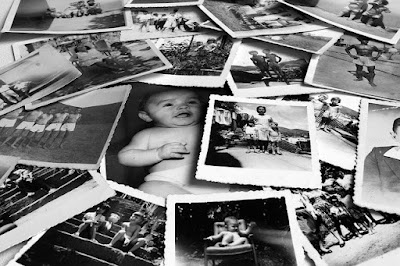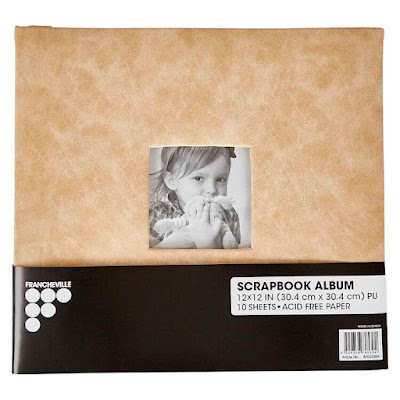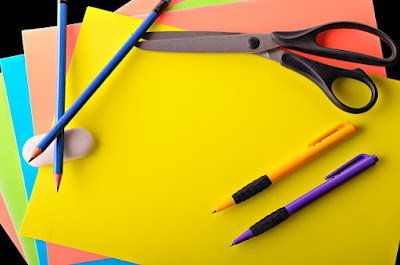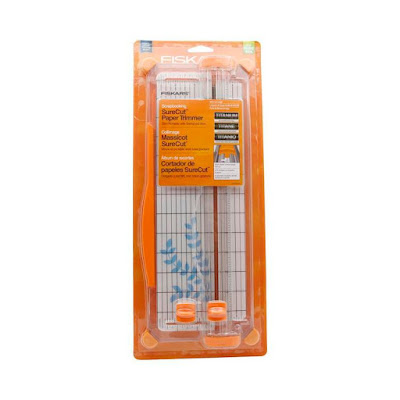Do you want to create a scrapbook but not sure where to begin? In this Scrapbooking Tutorial for Beginners ways to get started scrapbooking are discussed and the steps to take to make your first page. If you have never scrapbooked before here are some scrapbooking tips that will get you creating scrapbooking layouts in no time.
Scrapbooking is a fun and engrossing hobby but it can also be a bit overwhelming at first. That's why I've written this simple guide to walk you through the process of creating your first scrapbooking page. Let's get started.
The key to good scrapbooking is organization. Remember the more organised you are the better the flow. This is particularly important if you have time constraints. There is nothing more annoying than sitting down to scrap only to find that you have forgotten an essential item. If you are a person who likes lists you might find it helpful to make one to manage your project but this is a matter of individual style and ways of working.
1. Organize Your Photos and Select Your Favorites
Gather together the photos you would like to display in a scrapbook layout page. You probably have more than you need. That's OK because you can narrow down your selection later. For now just select 3-6 photos that you would like to include in your photo scrapbook.Choose the best images. Try to avoid including photos that are blurry, out-of-focus, faded or heavily creased. However do not let the quality of the photo dictate whether you scrapbook it or not as the most important thing is creating a lasting memory of an experience that is important to you.
Remember if you have too many photos left over you can eventually include them in another album or give them away to family or friends. If you are storing a lot of photographs in an old shoe box or something similar consider buying an archival box that will preserve your photos. These are excellent and they provide peace of mind knowing that your photos are not being degraded by the medium they are stored in.
Until you are confident it may be best to start with photos that can easily be replaced in case you make a mistake that you can't readily rectify. Adopting this strategy will give you the confidence to just have a play around without fear of getting it wrong which is an important creative principle.
2. Decide on the Size of the Layout
One of the earliest decisions that needs to be made when starting a scrapbook is what size to make your layout. Traditional physical scrapbooking pages are 12x12 inches (30.5xx30.5 cms) or 8.5x11 inches (21.5x27 cms) but there are other options as well like 8x8 inches.One of the advantages of going with 12x12 is that you can add a lot of photos and gain confidence using a larger layout. However if you don't have a lot of photos then you may decide to settle on a smaller format for your layout. Remember that the size of your chosen format will govern future choices like your paper sizes and albums.
3. Journaling
One of the reasons why so many of us love scrapbooking is the mix of storytelling, craft and photography. Each of these three are pillars to a good scrapbooking layout. Even though journaling is a key element it can be as long or short as you like but it needs to add value to your photographs by giving context to the photographs displayed and providing additional information.When creating a page it is important to consider your journaling carefully. Are there facts you need to check up on? If so do this before you start your page.
What would you like to say about these photos? Do you want to tell a story? or simply give the basic facts?
What feeling do you want to convey? Write down your ideas. Make notes to jog your memory. Post-it notes come in handy to record small snippets of information you want to include in your scrapbook layout and can easily be removed once you have added your actual journaling.
The aim of good journaling is to say enough about what is occurring to inform but not overshadow the photos or bombard anyone looking at the page with too many facts. Aim to be succinct.
Telling a story is a very effective journaling technique. Make your page personal to you. Your family and friends will want to know the story behind the photos. Journaling is best when its kept simple but make sure you cover the basics: like where, when, what, who, how, why.
Follow these links for more in-depth articles about how to use scrapbook journaling and quotes to use in scrapbooking layouts
Further Tips for Journaling
- Describe what is happening in the photos.
- Include the dates the photos were taken or the events occurred.
- Name the people/places in the photos.
- Tell the story in you own hand. Handwriting makes your journaling more personal. Later on you can try out computer journaling but for now stick with pen and ink.
4. Buying Your Scrapbooking Supplies
Scrapbooking supply stores can be a bit daunting at first but contrary to popular belief you don't need to spend a whole lot to get started. Think about what you need before visiting the store so that you stay within your budget and don't buy items that aren't really necessary. If you have a theme in mind such as a wedding or holiday that this page will form part of you might consider buying extra supplies to ensure consistency.One useful way to create a scrapbook for the beginner is to buy a scrapbooking kit which will contain all your need to make your first scrapbooking page. Typically scrapbooking kits come with coordinating papers, embellishments, stickers and a range of other accents like die-cuts and brads.
Scrapbooking kits are usually good value for money and offer a no fuss way to create your first page without the worry of coordinating all your scrapbooking layout elements.
If you want to have complete artistic control over the scrapbooking supplies you buy for your first page then here is a list of the bare minimum of scrapbooking items you will need to start your scrapbook. You will need:
- Scrapbook Album
Suggested formats are 12x12 or 8.5 x 11. Make sure the album is archival safe and acid free. Cheaper albums could damage your photos by leaching chemicals into the photos and paper with the passing of time if they are not designed for longevity.
Strictly speaking an album is not 100% necessary to buy straight away but if you don't purchase one at the beginning you will need a method such as a page protector for keeping your finished page safe otherwise it is at risk of spills and creasing. Another advantage of buying an album is that each page will come preloaded with white sheets of cardstock.
- Scrapbooking Adhesive
Adhesive on a runner, double-sided tape or a glue stick. Again ensure that the adhesive is made for crafting and is acid and lignin free. - Cardstock
Buy cardstock individually or in a small pack if you are not investing in a scrapbooking kit.
Consider cardstock which is thick sturdy paper as the background of the page layout on which you attach all the elements: photos, journaling, embellishments. It is often a good idea to go for a neutral color for cardstock and then add contrast with scrapbooking papers. If you want the cardstock to coordinate with specific photos then by all means choose a matching or coordinating color. - Scrapbook Paper
Printed papers to use in scrapbooking layouts come in all manner of designs such as florals, animal prints, hearts, checks and stripes. Papers can be bought in individual sheets or as a bank. If you decide against the kit you will need to pick out a sheet or two of paper that coordinate with your photos and with the cardstock.
- Fine-tip Pen of Archival Quality
Pens for scrapbooking are made from pigment ink and are permanent. You will need a good-quality black pen that is of archival quality, waterproof, fade resistant, non-bleeding and acid free. There are lots of different kinds of markers to choose from including calligraphy and brush pens. - Paper Trimmer
A paper trimmer is an invaluable scrapbooking item. While not strictly essential to make your first scrapbooking page bear in mind that it is hard to cut papers accurately with just a pair of scissors. If you do decide to invest in a paper trimmer it will need to be sized 12 inch (30.5 cms) to cope with 12x12 papers.
- Embellishments
Embellishments such as die cuts, brads, buttons, ribbons, washi tape, borders and other materials are another way to add style and personality to your scrapbooking layout page. Make sure that you pick embellishments that suit your photos and your own personal style. All sorts of themes are readily available eg travel, nautical, vacation, camping, weddings, babies or you can simply pick up a pack of more neutral embellishments that could be applied to a variety of layouts.
I personally find washi tape very useful for accenting photos and papers and would recommend that you consider buying at least one roll that you think will work well with your layout. - Scrapbook Stickers (Optional)
Stickers are useful for titling and to add enhancements to your page. Make sure these are acid free and lignun free and are made for scrapbooking purposes. Ordinary stickers are not designed for the long haul and will eventually leach glue into your precious page.
Stickers can be expensive as it is easy to get carried away and buy more than you need. For economy I suggest you buy a small booklet of stickers with designs that appeal to you, are on your chosen theme and which you think will accent your photos.
The range of choice for scrapbook stickers is enormous and prices are generally reasonable depending on where you shop. There are stickers on all sorts of themes and niches eg for travel scrapbooks, wedding scrapbook, vacation scrapbook, baby scrapbook etc - Other Scrapbooking Supplies
Other very useful items to create a scrapbook page are:
- Ruler
- Pencil
- Eraser
- Scissors (sturdy)
As you can see there are a number of basic scrapbooking supplies needed to get started which is why a scrapbooking kit can be both cost effective and a way to take any headache out of shopping for your scrapbooking supplies especially if you are struggling to coordinate items. There is a whole science around color schemes so if this is not your forte a scrapbooking kit may be the way to go.
When I started out scrapbooking I bought a scrapbooking kit which included the album and page protectors as well as a selection of coordinating papers and embellishments. Looking back I believe it was a good decision to buy the kit even though I didn't use a lot of what was included all at once.
What I liked was the opportunity of playing around with lots of different elements to see what looked good on the layout. I learned very quickly what I liked and didn't like which was definitely helpful in developing my own personal scrapbooking style.
5. Designing Your Scrapbook Layout Page
Beginner scrapbookers usually find it helpful to take a look at pages created by others before launching into their own layouts. There are a variety of scrapbooking magazines on the market many of which include quite detailed descriptions of the resources used to create the page. Apart from the internet your local library is a good place to start if you are in need of inspiration as there is a good chance they will have at least one or two scrapbooking magazines on subscription.Layout is one of the most important aspects of scrapbooking. Before adhering any pictures to the page try out different positions until you are happy with the arrrangement. Ensure you leave enough room for your journaling and any embellishments you want to include.
If you are struggling with the layout there are some good resources on the net. Try our web resources section for links to sites providing layouts and sketches suitable for most types of project. Remember that to start with anyway a simple layout is best.
Layouts recommended in scrapbooking books and magazines are only a guide to get you started as a beginner. Remember you have the freedom to change the design to suit your own particular needs. If you want to add extra journaling or substitute a larger image for a smaller photo go right ahead. The last thing you want is your creative process being hampered or slowed down by is anything too prescriptive.
6. Assembling Your Scrapbook Layout Page
After you have decided on a layout that you are happy with assemble the page elements. You may need to do this in a particular order depending on the desired effect. Take your time putting it all together to ensure accuracy. Measure distances and ensure that all elements on the page are properly aligned before sticking them down.Finally pop your page into a plastic sleeve from your album to protect it from accidental soiling and damage. Then there is the magic of sharing your creation with your friends and family. Don't be shy about sharing who knows you might inspire other around you to also start scrapbooking.
This article describes tips for the beginner on how to start a scrapbook and create a first page. Key considerations are explored to help you avoid newbie mistakes like buying too many expensive scrapbooking supplies that you most likely won't need. Also discussed are some journaling tips to help you tell the story behind the photos and to create first scrapbooking page with love to enjoy and be proud of.
Related Articles
10 Ways to Add More Handwritten Journaling to Scrapbook Layouts6 Key Elements of Scrapbooking Layouts
6 Essential Scrapbook Tools for the Beginner Scrapbooking Physical Layouts
Essential Scrapbooking Supplies for Scrapbooking Physical Layouts
Beginners Guide to Scrapbooking Childhood Memories in a Memory Album
Simple Photo Matting for Beginner Scrapbook Layouts
Print this Post as PDF












0 comments:
Post a Comment